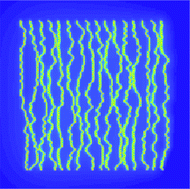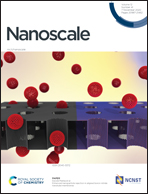Minimising damage in high resolution scanning transmission electron microscope images of nanoscale structures and processes†
Abstract
Beam damage caused during acquisition of the highest resolution images is the current limitation in the vast majority of experiments performed in a scanning transmission electron microscope (STEM). While the principles behind the processes of knock-on and radiolysis damage are well-known (as are other contributing effects, such as heat and electric fields), understanding how and especially when beam damage is distributed across the entire sample volume during an experiment has not been examined in detail. Here we use standard models for damage and diffusion to elucidate how beam damage spreads across the sample as a function of the microscope conditions to determine an “optimum” sampling approach that maximises the high-resolution information in any image acquisition. We find that the standard STEM approach of scanning an image sequentially accelerates damage because of increased overlap of diffusion processes. These regions of accelerated damage can be significantly decelerated by increasing the distance between the acquired pixels in the scan, forming a “spotscan” mode of acquisition. The optimum distance between these pixels can be broadly defined by the fundamental properties of each material, allowing experiments to be designed for specific beam sensitive materials. As an added bonus, if we use inpainting to reconstruct the sparse distribution of pixels in the image we can significantly increase the speed of the STEM process, allowing dynamic phenomena, and the onset of damage, to be studied directly.



 Please wait while we load your content...
Please wait while we load your content...